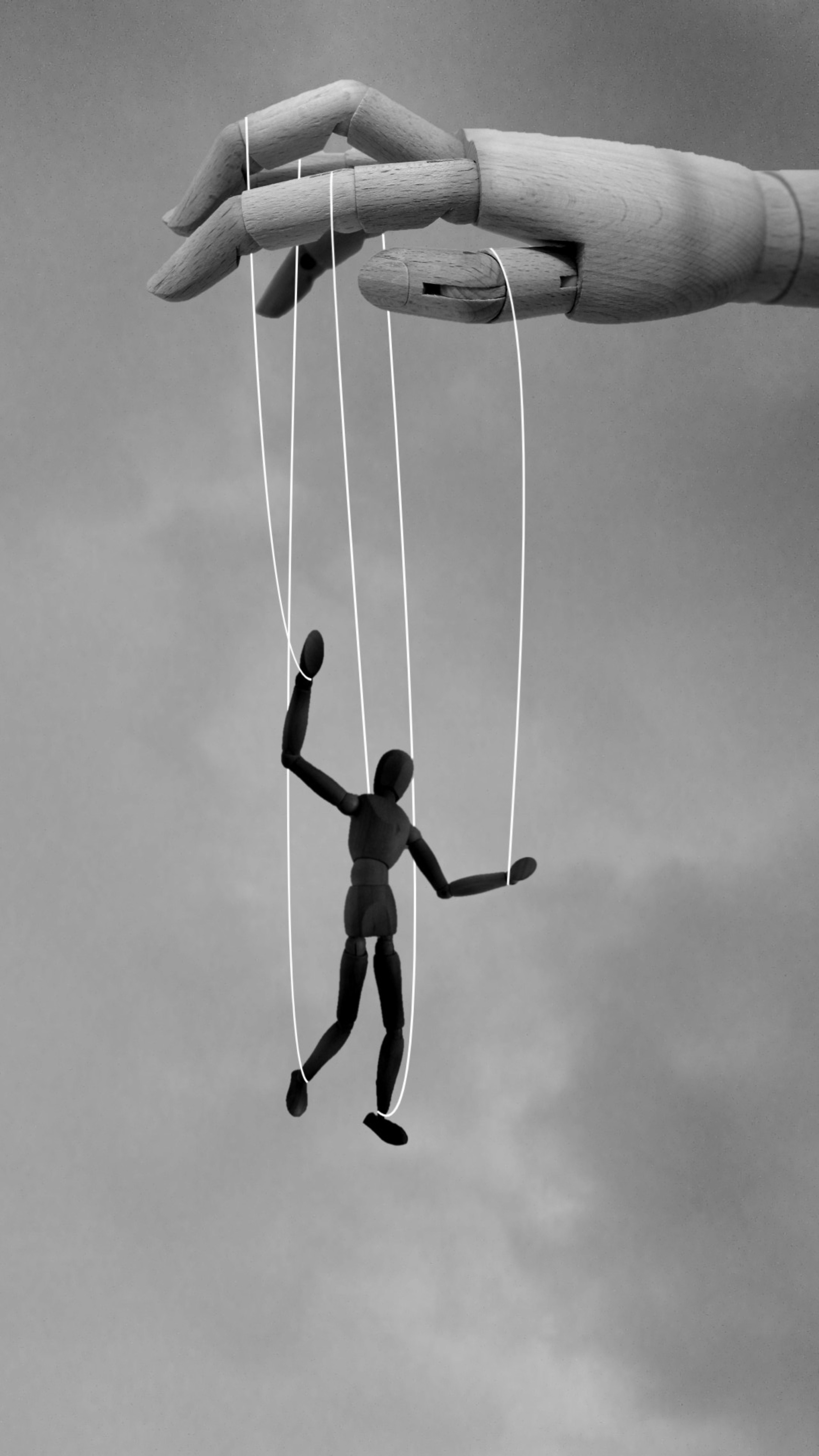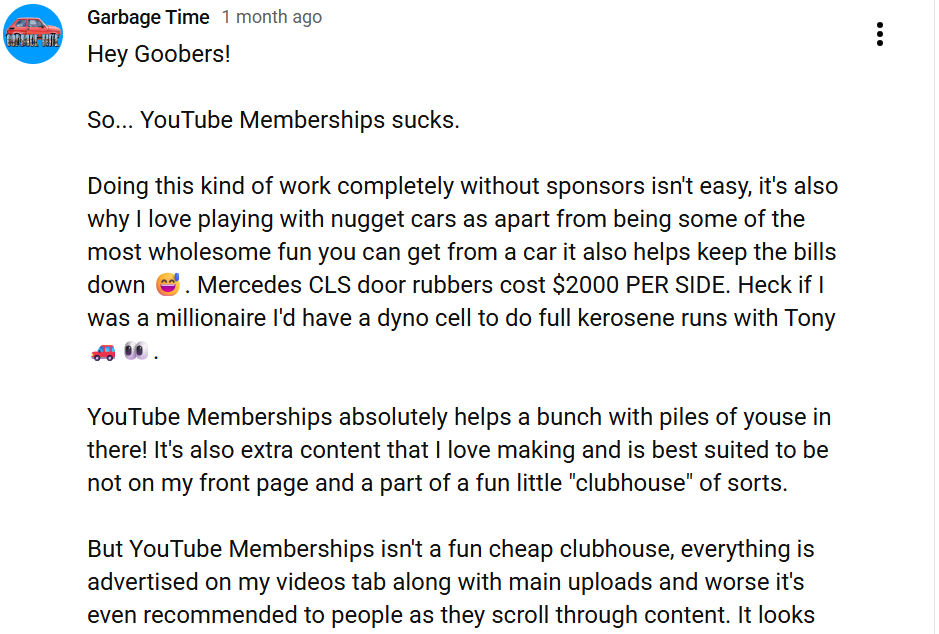Why does owning your audience matter in 2025 amidst YouTube’s policy changes?

When platforms start thinking about their self-interest, it becomes important for creators and users to do the same. For quite a few months, we have been noticing the sudden changes YouTube is bringing forth, impacting the creator economy as a whole. We will talk about the two major updates of YouTube here. Both of these features are silent enough, but loud enough to create outrage.
The first shift in YouTube’s algorithm became apparent when Linux Sebastian & Ludwig Ahgren, popular YouTuber, released a video about his videos being shoved into people’s feeds who haven't even subscribed to YouTube’s premium. To make it simpler, YouTube started showing premium videos to non-premium members as well. Another YouTuber DankPod (Wade Nixon), posted on his channel Garbage Time about the same issue concerning the membership programme.

The next issue was when YouTube launched a premium lite tier where only a few videos were ad-free. The update was quite vague, with people raising concerns about what few meant
What’s changing on YouTube?
It all started when Linus Tech Tips (LTT) on his video titled “ Members only videos are a huge problem on YouTube” discussed how the recent update had quietly hurt both creators and viewers and how it had impacted them with the massive drop in their subscribers. Earlier the exclusive content behind a paywall stayed separate, hidden from non-members' feed and clearly marked as special, which could only be accessed by clicking the Join button. And for a while, it worked well. But in late 2024 and early 2025, things started to change. This has led to huge confusion when YouTube updated its system and now members-only videos began appearing in public feeds and recommendations, even for people who weren't paying members.

This new update caused widespread frustration among the viewers. The audiences poured in complaints on Reddit, saying they felt excluded or frustrated because they were hit with thumbnails of videos that they could not watch, which eventually led them to dislike those videos. They felt like the new update was ruining their casual viewing experience. Now, this would impact creators, because if people start downvoting content excessively, YouTube may shadowban or in the worst case scenario, censor the video itself.

Redditors complaining about the rigid change YouTube had brought about:


To be precise, YouTube’s recent update made people question the control of their authority. Creators are forced into an aggressive marketing strategy with which they may not even agree, leading viewers to perceive the creator as "selling out" or focusing too heavily on paywalls, even if it's YouTube's algorithm driving the change. This shift isn't about giving creators more control; it's YouTube using the content to drive membership sign-ups, often at the expense of a positive viewer experience.
We don’t know what YouTube is up to, but if the algorithm starts behaving notoriously, it will not only impact creators but will also cause inconvenience for the viewers. Let’s hope this issue is fixed soon creating a seamless communication for both creators and viewers.
YouTube Premium Lite Tier - Is it actually worth your money and are creators benefiting from it at all?
A few months ago Google-owned YouTube launched YouTube premium lite tier at Rs 89/month, meaning it will not show ads on a few of the videos. On the surface level, this is a cheaper alternative to Premium, but let’s be honest it’s just another way to fool the audience to churn in more money. Because, if you dig deeper you would notice that ads may still appear on music and shorts where a huge chunk of Indian audiences usually spend their time. So, you pay to remove ads and are still bombarded with one and if you wish to remove all of it you have to pay for the Premium version. Definitely, a smart move put forth by YouTube. If YouTube starts slicing its audience into smaller subscription tiers, one that removes some ads, one that removes all, it is fragmenting the very system that pays creators. Because a YouTube Premium Lite tier would likely lead to lower revenue per subscriber for most videos compared to full Premium due to a smaller payout share, less money per hour watchtime and some ads still appearing.
Whatever it is, the way this event has unfolded reminds us of a term by Cory Doctorow called Enshitification: the slow steady process of making a product worse by making changes in the features or pricing of a product just to squeeze more money from users. TikTok, Amazon, Apple, all of them follow a simple formula. They first lure users onto their platforms, then businesses who might profit from these users, and then finally squeeze both for their own profit. We’ve already seen this firsthand done by streaming platforms like Amazon Prime where users had to pay an add-on charge of ₹129 a month or ₹699 along with their membership in order to bypass ads. We hope that YouTube does make some changes in the lite tier which could actually benefit the users. Because tech giants do have the power to make or break the game.

Why does Owning your content matter more than ever now?
The greatest asset for the creators are their audiences more than videos. When a creator builds a community on a third party platform, it is succumbing to the rigid rules of the platform. It’s like renting a space on someone else’s property. You have to stick to their rules and their algorithms which are way too unpredictable and notorious. Because when platforms change any policies, like YouTube's recently member-only video rollout, creators are reminded that they don't really control who sees their content or how it is monetised. The platform decides its visibility, ad rates and the followers, to which it gets notified. Basically, you might lose your audience overnight without doing anything wrong.
And it’s not just YouTube. Similarly is the case with Spotify, where Artists like James Blake have discussed about the artists who get paid between $0.003 and $0.005 per stream on Spotify, which means that a song has to be played over 250,000 times just to earn $1,000. He recently spoke on the BBC about the struggles of the artists who see little financial return, even after millions of views and have resorted to turning to direct-to-fan platforms after such overnight policies.
In such difficult times, the only rescue is to create a safety net for yourself and creators are already doing so. Linus Sebastian has already launched his own membership platform Floatplane where he hosts ad-free videos and shares early releases and exclusive content directly to the subscribers. This helps in creating a one-on-one relationship where both the creators and users are the real beneficiaries and not the platform. So, here you take control of everything right from pricing, visibility, community, audience and revenue.
Now, here we are not saying you should completely abandon platforms like YouTube, Spotify or for that matter any social media channels like Instagram and Facebook. Because these platforms are good for discoverability and reach. But these shouldn’t be your only option, because algorithms are fickle and your content is precious. So, own your content and launch your videos elsewhere, because it’s essential to stand above the crowd and give your work a dedicated space where you are in control.
Where does Skara fit in?
At Skara we have always believed that you must own your audience no matter what, because algorithms are fickle and your content can be wiped out without any notice. So, where does Skara fit in amidst this unpredictability? Skara is one step away from algorithmic dependence and one step closer to sovereignty. It’s about taking control over your audience, community and revenue.
Unlike YouTube, which is a video-sharing platform, Skara is an OTT builder, where you can host and distribute your videos effortlessly. It helps you in building your fully branded customized white-label video membership / OTT site+ app in minutes. It’s got features like analytics, community and so much more.
Video creators are already building their streaming platforms and are using YouTube as another pool of revenue for monetizing their content. For instance, they are releasing half versions on YouTube and exclusive full packed versions on their own branded streaming platforms. And that’s where we come in, giving you a customizable branded streaming website and app, that’s economical, ready in minutes, where you can host your exclusive content, under your name.
So, if you want to move beyond YouTube and not depend on any third party platform for your video content, then you should give Skara a try. It’s free for 30 days.
FAQs
- Why is it essential to have your own platform apart from YouTube?
Having your own platform whether it is a personal website, app or OTT service is a matter of control of their own content. It is no longer just a luxury but about security to thrive with your own community.
- What can beginners do right now to start owning their audiences?
Beginners can create a simple website or build an email newsletter and can also try to encourage their followers to sign up or subscribe outside of YouTube. Once the audience grows they can gradually expand into a paid membership Platform.
- What are the benefits of having your own website for OTT platforms?
The benefits of having your own OTT platform is that you can have full control over content and monetization. There is no algorithm to decide who sees your post or any kind of manipulation.









